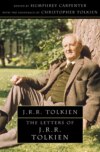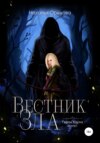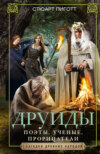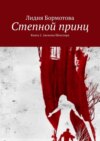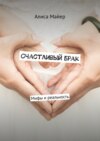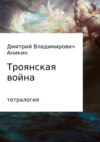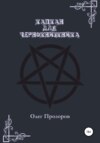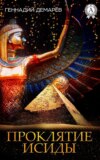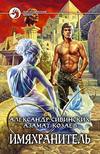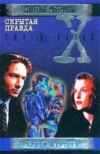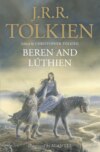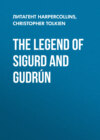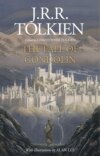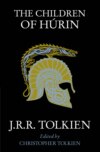Читать книгу: «The Letters of J. R. R. Tolkien», страница 2
7 To the Electors of the Rawlinson and Bosworth Professorship of Anglo-Saxon, University of Oxford
[In the summer of 1925 the Professorship of Anglo-Saxon at Oxford was advertised, following the resignation of W. A. Craigie. Tolkien decided to apply, though he was only thirty-three. This is his formal letter of application, dated 27 June 1925.]
Gentlemen,
I desire to offer myself as a candidate for the Rawlinson and Bosworth Professorship of Anglo-Saxon.
A Chair which affords such opportunity of expressing and communicating an instructed enthusiasm for Anglo-Saxon studies and for the study of the other Old Germanic languages is naturally attractive to me, nor could I desire anything better than to be reassociated in this way with the Oxford English School. I was a member of that School both as undergraduate and as tutor, and during my five years’ absence in Leeds am happy to have remained in touch with it, more especially, in the last two years, as an Examiner in the Final Schools.
I entered Exeter College as Stapledon Exhibitioner in 1911. After taking Classical Moderations in 1913 (in which I specialized in Greek philology), I graduated with first class honours in English in 1915, my special subject being Old Icelandic. Until the end of 1918 I held a commission in the Lancashire Fusiliers, and at that date entered the service of the Oxford English Dictionary. I was one of Dr. Bradley’s1 assistants until the spring of 1920, when my own work and the increasing labours of a tutor made it impossible to continue.
In October 1920 I went to Leeds as Reader in English Language, with a free commission to develop the linguistic side of a large and growing School of English Studies, in which no regular provision had as yet been made for the linguistic specialist. I began with five hesitant pioneers out of a School (exclusive of the first year) of about sixty members. The proportion to-day is 43 literary to 20 linguistic students. The linguists are in no way isolated or cut off from the general life and work of the department, and share in many of the literary courses and activities of the School; but since 1922 their purely linguistic work has been conducted in special classes, and examined in distinct papers of special standard and attitude. The instruction offered has been gradually extended, and now covers a large part of the field of English and Germanic philology. Courses are given on Old English heroic verse, the history of English*, various Old English and Middle English texts*, Old and Middle English philology*, introductory Germanic philology*, Gothic, Old Icelandic (a second-year* and third-year course), and Medieval Welsh*. All these courses I have from time to time given myself; those that I have given personally in the past year are marked*. During this last session a course of voluntary reading of texts not specially considered in the current syllabus has attracted more than fifteen students, not all of them from the linguistic side of the department.
Philology, indeed, appears to have lost for these students its connotations of terror if not of mystery. An active discussion-class has been conducted, on lines more familiar in schools of literature than of language, which has borne fruit in friendly rivalry and open debate with the corresponding literary assembly. A Viking Club has even been formed, by past and present students of Old Icelandic, which promises to carry on the same kind of activity independently of the staff. Old Icelandic has been a point of special development, and usually reaches a higher standard than the other special subjects, being studied for two years and in much the same detail as Anglo-Saxon. . . . .
The large amount of teaching and direction which my post has hitherto involved, supplemented by a share in the general administration of a growing department, and latterly by the duties of a member of Senate at a time of special difficulty in University policy, has seriously interfered with my projects for publishable work; but I append a note of what I have found time to do. If elected to the Rawlinson and Bosworth Chair I should endeavour to make productive use of the opportunities which it offers for research; to advance, to the best of my ability, the growing neighbourliness of linguistic and literary studies, which can never be enemies except by misunderstanding or without loss to both; and to continue in a wider and more fertile field the encouragement of philological enthusiasm among the young.
I remain,
Gentlemen,
Your obedient servant,
J. R. R. Tolkien.
8 From a letter to the Vice Chancellor of Leeds University
22 July 1925
My election to the Rawlinson & Bosworth professorship at Oxford has just been announced to me, & I have accepted – it takes effect from next October 1st – only with feelings of great regret at this sudden severance, in spite of this unexpected turn of fortune for myself.
Only the sudden resignation of my predecessor has thrust this upon me so soon – I dimly coveted it as a thing perhaps for the more distant years, but now after this University’s kindness, and the great happiness of my brief period of work here, I feel ungrateful in asking to be released from my appointment so soon. I hope for your forgiveness.
9 To Susan Dagnall, George Allen & Unwin Ltd.
[Tolkien wrote the greater part of The Hobbit during his first seven years as Professor of Anglo-Saxon at Oxford. A text was in existence by the winter of 1932, when it was read by C. S. Lewis, though at this stage the typescript apparently lacked the final chapters, and broke off shortly before the death of the dragon Smaug. This typescript was eventually seen by Susan Dagnall, an Oxford graduate working for the London publishing house of Allen & Unwin, and she encouraged Tolkien to complete the story and offer it for publication. See nos. 163, 257, and 294 for Tolkien’s account of her involvement with the book, though two of these later letters are in error in suggesting that Susan Dagnall was still an Oxford student when she read the manuscript. See further Biography p. 180. It was on 3 October 1936 that Tolkien sent the completed typescript to Allen & Unwin. Stanley Unwin, founder and chairman of the firm, replied on 5 October that they would give their ‘immediate and careful consideration’ to the book. No further correspondence survives until the following letter. By the time that Tolkien wrote it, the book had been accepted for publication, and he was already preparing maps and illustrations.]
4 January 1937
20 Northmoor Road, Oxford
Dear Miss Dagnall,
Maps &c. for ‘The Hobbit’.
I am sorry for the long delay. I was unwell for some time, and then faced by a family laid low one by one by influenza, brought back from school for the entire ruin of Christmas. I succumbed myself on New Year’s Eve. It has been difficult to do anything, and what I have done is I fear poor enough. I have redrawn two items: the chart, which has to be tipped in (in Chapter I), and the general map. I can only hope – as I have small skill, and no experience of preparing such things for reproduction – that they may possibly serve. The other maps I have decided are not wanted.
I have redrawn (as far as I am capable) one or two of the amateur illustrations of the ‘home manuscript’, conceiving that they might serve as endpapers, frontispiece or what not. I think on the whole such things, if they were better, might be an improvement. But it may be impossible at this stage, and in any case they are not very good and may be technically unsuitable. It would be kind if you would retum the rejected.
Yours sincerely
J. R. R. Tolkien.
10 To C. A. Furth, Allen & Unwin
[Some time between 1932 and 1937, Tolkien wrote and illustrated a short book for children entitled Mr Bliss. For a description of it, see Biography p. 163. It was shown to Allen & Unwin at the same time that The Hobbit was submitted. The publishers said they would be happy to accept it, providing Tolkien could reduce the number of colours in the drawings.]
17 January 1937
20 Northmoor Road, Oxford
Dear Sir,
‘Mr Bliss’ returned safely. I can only say that I was surprised to receive your kind letter the following morning. I did not imagine that he was worth so much trouble. The pictures seem to me mostly only to prove that the author cannot draw. But if your firm really think that he is worth publishing, I will try and make the illustrations more easy to reproduce. Certainly it would be a great help, if you would be so kind as to call, as you suggest, and give me some advice. I am at present endeavouring to earn a grant for ‘research’,1 in addition to my ordinary duties, but I may find some odd moments in the near future, especially as I am freed from the burden of examining for two years.
I am also grateful and pleasantly surprised that the drawings for ‘the Hobbit’ can be used. I leave it in your hands as to the best way of reproducing and using them. Actually the chart – the map with runes – was intended to be tipped in (folded) in Chapter I, opposite the first mention of it: ‘a piece of parchment rather like a map’, towards the end of the chapter. The other map in the ‘home MS.’ came at the end, and the long narrow drawing of Mirkwood2 was at the beginning. The Elvenking’s Gate came at the end of Ch. VIII, Lake Town in Ch. X, The Front Gate in Ch. XI after the description of the adventurers’ first sight of it: ‘they could see the dark cavernous opening in a great cliff-wall’. In considering the matter closer I see that this concentrates all the maps and pictures, in place or reference, towards the end. This is due to no plan, but occurs simply because I failed to reduce the other illustrations to even passable shape. I was also advised that those with a geographical or landscape content were the most suitable – even apart from my inability to draw anything else.
I now enclose 6 more.3 They all are obviously defective, and quite apart from this may, each or some, present difficulties of reproduction. Also you may be quite unwilling to consider thus belatedly any more complications, and a change of plan. So that I shall be neither pained nor surprised if you return them, all or any. . . . .
I am yrs. truly,
J. R. R. Tolkien.
11 From a letter to Allen & Unwin
5 February 1937
[Concerning the reproduction of illustrations in The Hobbit.]
I approve the rough prints. Reduction has improved all except ‘the Trolls’. On this there are one or two defects, probably simply due to the impression. I have marked them: the thin white outline of one of the background trees is slightly broken; some of the tiny dots outlining a flame have failed to come out; the dot after ‘Trolls.’ also.
In the ‘Hall at Bag-End’ I misguidedly put in a wash shadow reaching right up to the side beam. This has of course come out black (with disappearance of the key) though not right up to the beam. But the print is I think as good as the original allows. Please note – these are not serious criticisms! I am still surprised that these indifferent pictures have been accepted at all, and that you have taken so much trouble with them – especially against economics (a factor I had not forgotten, and the reason for my originally forswearing illustrations).
12 To Allen & Unwin
[In mid-March, Tolkien returned the proofs of The Hobbit to Allen & Unwin, having marked them with a very large number of alterations to the original text. He was told that as a result he might have to pay part of the cost of correction, though the publishers noted that he had devised revisions which would occupy exactly the same space as the original text. With the following letter, he submitted a drawing for the dust-jacket, which included a runic inscription.]
13 April 1937
20 Northmoor Road, Oxford
Dear Sirs,
I return under separate cover the corrected Revises of the Hobbit, complete. . . . . I note what you so kindly say about the cost of corrections. I must pay what is just, if required; though I shall naturally be grateful for clemency. Thank you for your trouble & consideration. . . . .
You will find with the revised proofs a draft of the jacket, for your criticism. I discovered (as I anticipated) that it was rather beyond my craft and experience. But perhaps the general design would do?
I foresee the main objections.
There are too many colours: blue, green, red, black. (The 2 reds are an accident; the 2 greens inessential.) This could be met, with possible improvement, by substituting white for red; and omitting the sun, or drawing a line round it. The presence of the sun and moon in the sky together refers to the magic attaching to the door.
It is too complicated, and needs simplifying: e.g. by reducing the mountains to a single colour, and simplification of the jagged ‘fir-trees’. . . . .
In redrawing the whole thing could be reduced – if you think the runes are attractive. Though magical in appearance they merely run: The Hobbit or There and Back Again, being the record of a year’s journey made by Bilbo Baggins; compiled from his memoirs by J. R. R. Tolkien and published by George Allen & Unwin. . . . .
Yrs truly
J. R. R. Tolkien.
13 To C. A. Furth, Allen & Unwin
[On 11 May, Allen & Unwin told Tolkien that they had interested ‘one of the outstanding firms of American publishers’ in The Hobbit, and said that this firm ‘would like a number of further illustrations in colour and suggested employing good American artists’. Allen & Unwin, however, thought ‘it would be better if all the illustrations were from your hand’.]
13 May 1937
20 Northmoor Road, Oxford
Dear Mr Furth,
Thank you for the information concerning prospective American publication. Could you tell me the name of the firm, and what are likely to be the financial arrangements?
As for the illustrations: I am divided between knowledge of my own inability and fear of what American artists (doubtless of admirable skill) might produce. In any case I agree that all the illustrations ought to be by the same hand: four professional pictures would make my own amateurish productions look rather silly. I have some ‘pictures’ in my drawer, but though they represent scenes from the mythology on the outskirts of which the Hobbit had his adventures, they do not really illustrate his story. The only possible one is the original coloured version of Mirkwood1 (re-drawn in black and white for ‘the Hobbit’). I should have to try and draw some five or six others for the purpose. I will attempt this, as far as time allows in the middle of term, if you think it advisable. But I could not promise anything for some time. Perhaps the matter does not allow of much delay? It might be advisable, rather than lose the American interest, to let the Americans do what seems good to them – as long as it was possible (I should like to add) to veto anything from or influenced by the Disney studios (for all whose works I have a heartfelt loathing). I have seen American illustrations that suggest that excellent things might be produced – only too excellent for their companions. But perhaps you could tell me how long there is before I must produce samples that might hope to satisfy Transatlantic juvenile taste (or its expert connoisseurs)?. . . .
Yours sincerely
J. R. R. Tolkien
14 To Allen & Unwin
[The publishers had suggested to Tolkien that The Hobbit should be published in October 1937, just after the beginning of the Michaelmas Term at Oxford. They also told him that they had forwarded his letter about illustrations (no. 13) to the Houghton Mifflin Company of Boston, Massachusetts, who were to publish the book in America.]
28 May 1937
20 Northmoor Road, Oxford
Dear Sirs,
. . . . Date of publication. This is, of course, your business, and entails many considerations outside my knowledge. In any case the final decision is now, I suppose, made; and America has also to be considered. But as far as G.B. is concerned, I cannot help thinking that you are possibly mistaken in taking Oxford University and its terms into account; and alternatively, if you do, in considering early October better than June. Most of O.U. will take no interest in such a story; that part of it that will is already clamouring, and indeed beginning to add The Hobbit to my long list of never-never procrastinations. As far as ‘local interest’ is concerned it is probably at its peak (not that at its best it will amount to much reckoned in direct sales, I imagine). In any case late June between the last preparations for exams and the battle with scripts (affecting only a minority of seniors) is a quiescent interlude, when lighter reading is sought, for immediate use and for the vacation. October with the inrush of a new academic year is most distracted.
Mr Lewis of Magdalen,1 who reviews for the Times Literary Supplement, tells me that he has already written urging a review and claiming the book as a specialist in fairy-stories; and he is now disgruntled because he will get ‘juveniles’ that he does not want, while the Hobbit will not reach him until the vacation is over, and will have to wait till December to be read & written up properly. Also if the book had been available before the university disintegrates I could have got my friend the editor of the O.U. Magazine,2 who has been giving it a good dose of my dragon-lore recently, to allocate it and get a review at the beginning of the autumn term. However, I say these things too late I expect. In any case I do not suppose it makes in the long run a great deal of difference. I have only one personal motive in regretting this delay: and that is that I was anxious that it should appear as soon as possible, because I am under research-contract since last October, and not supposed to be indulging in exams or in ‘frivolities’. The further we advance into my contract time, the more difficulty I shall have (and I have already had some) in pretending that the work belongs wholly to the period before October 1936. I shall now find it very hard to make people believe that this is not the major fruits of ‘research’ 1936–7!
Houghton Mifflin Co. I was perturbed to learn that my letter had been sent across the water. It was not intended for American consumption unedited: I should have expressed myself rather differently. I now feel even greater hesitation in posing further as an illustrator. . . . . However, I enclose three coloured ‘pictures’.3 I cannot do much better, and if their standard is too low, the H.M.Co can say so at once and without offence, as long as they send them back. These are casual and careless pastime products, illustrating other stories. Having publication in view I could possibly improve the standard a little, make drawings rather bolder in colour & less messy and fussy in detail (and also larger). The Mirkwood picture is much the same as the plate in the Hobbit, but illustrates a different adventure. I think if the H.M.Co wish me to proceed I should leave that black and grey plate and do four other scenes. I will try my hand at them as soon as possible, which is not likely to be before their verdict arrives, if cabled . . .
Yours truly,
J. R. R. Tolkien.
15 To Allen & Unwin
[Enclosed with this letter was a coloured version of the drawing ‘The Hill: Hobbiton-across-the-Water’. Tolkien had already sent four new coloured drawings: ‘Rivendell’, ‘Bilbo woke with the early sun in his eyes’, ‘Bilbo comes to the Huts of the Raft-elves’, and ‘Conversation with Smaug’. All of these except the ‘Huts of the Raft-elves’ were used in the first American edition, and all except ‘Bilbo woke with the early sun in his eyes’ were added to the second British impression.]
31 August 1937
20 Northmoor Road, Oxford
Dear Mr Furth,
I send herewith the coloured version of the frontispiece. If you think it good enough, you may send it on to the Houghton Mifflin Co. Could you at the same time make it finally clear to them (it does not seem easy): that the first three drawings were not illustrations to ‘the Hobbit’, but only samples: they cannot be used for that book, and may now be returned. Also that the ensuing five drawings (four and now one) were specially made for the H.M.Co, and for ‘the Hobbit’. They are, of course, at liberty to reject or use all or any of these five. But I would point out that they are specially selected so as to distribute illustration fairly evenly throughout the book (especially when taken in conjunction with the black-and-white drawings).
I suppose no question of remuneration arises? I have no consciousness of merit (though the labour was considerable), and I imagine that the ‘gratis’ quality of my efforts compensates for other defects. But I gathered that the H.M.Co’s original terms simply covered ‘The Hobbit’, as you produced it, and that they then proposed to top up with coloured pictures, as a selling attraction of their own, employing good American artists. They would have had to pay these independently. At the moment I am in such difficulties (largely owing to medical expenses) that even a very small fee would be a blessing. Would it be possible to suggest (when they have decided if they want any of these things) that a small financial consideration would be gracious?
Perhaps you will advise me, or tell me where I get off? I need hardly say that such an idea only occurs to me with regard to the Americans – who have given a lot of unnecessary trouble. Even if I did not know that your production costs have been excessive (and that I have been hard on proofs), you are most welcome at any time to anything you think I can do, in the way of drawing or redrawing, that is fit to use on The Hobbit.
I hope Mr Baggins will eventually come to my rescue – in a moderate way (I do not expect pots of troll-gold). I am beginning to have hopes that the publishers (vide jacket) may be justified.1 I have had two testimonials recently, which promise moderately well. For one thing Professor Gordon2 has actually read the book (supposed to be a rare event); and assures me that he will recommend it generally and to the Book Society. I may warn you that his promises are usually generous – but his judgement, at any rate, is pretty good. Professor Chambers3 writes very enthusiastically, but he is an old and kindhearted friend. The most valuable is the document I enclose, in case it may interest you: a letter from R. Meiggs (at present editing the Oxford Magazine). He has no reason for sparing my feelings, and is usually a plain speaker. Of course, he has no connexions with reviewing coteries, and is virtually a mere member of the avuncular public.
Yours sincerely
J. R. R. Tolkien.
P.S. I enclose also a commentary on the jacket-flap words for your perusal at leisure – if you can read it.
[When The Hobbit was published on 21 September 1937, Allen & Unwin printed the following remarks on the jacket-flap: ‘J. R. R. Tolkien. . . . has four children and The Hobbit. . . . was read aloud to them in nursery days. . . . . The manuscript. . . . was lent to friends in Oxford and read to their children. . . . . The birth of The Hobbit recalls very strongly that of Alice in Wonderland. Here again a professor of an abstruse subject is at play.’ Tolkien now sent the following commentary on these remarks.]
By the way. I meant some time ago to comment on the additional matter that appears on the jacket. I don’t suppose it is a very important item in launching The Hobbit (while that book is only one minor incident in your concerns); so I hope you will take the ensuing essay in good part, and allow me the pleasure of explaining things (the professor will out), even if it does not appear useful.
I am in your hands, if you think that is the right note. Strict truth is, I suppose, not necessary (or even desirable). But I have a certain anxiety lest the H.M.Co seize upon the words and exaggerate the inaccuracy to falsehood. And reviewers are apt to lean on hints. At least I am when performing that function.
Nursery: I have never had one, and the study has always been the place for such amusements. In any case is the age-implication right? I should have said ‘the nursery’ ended about 8 when children go forth to school. That is too young. My eldest boy was thirteen when he heard the serial. It did not appeal to the younger ones who had to grow up to it successively.
Lent: we must pass that (though strictly it was forced on the friends by me). The MS. certainly wandered about, but it was not, as far as I know, ever read to children, and only read by one child (a girl of 12–13), before Mr Unwin tried it out.
Abstruse: I do not profess an ‘abstruse’ subject – not qua ‘Anglo-Saxon’. Some folk may think so, but I do not like encouraging them. Old English and Icelandic literature are no more remote from human concerns, or difficult to acquire cheaply, than commercial Spanish (say). I have tried both. In any case – except for the runes (Anglo-Saxon) and the dwarf-names (Icelandic), neither used with antiquarian accuracy, and both regretfully substituted to avoid abstruseness for the genuine alphabets and names of the mythology into which Mr Baggins intrudes – I am afraid my professional knowledge is not directly used. The magic and mythology and assumed ‘history’ and most of the names (e.g. the epic of the Fall of Gondolin) are, alas!, drawn from unpublished inventions, known only to my family, Miss Griffiths1 and Mr Lewis. I believe they give the narrative an air of ‘reality’ and have a northern atmosphere. But I wonder whether one should lead the unsuspecting to imagine it all comes out of the ‘old books’, or tempt the knowing to point out that it does not?
‘Philology’ – my real professional bag of tricks – may be abstruse, and perhaps more comparable to Dodgson’s maths. So the real parallel (if one exists: I feel very much that it breaks down if examined)fn1 lies in the fact that both these technical subjects in any overt form are absent. The only philological remark (I think) in The Hobbit is on p. 221 (lines 6–7 from end):2 an odd mythological way of referring to linguistic philosophy, and a point that will (happily) be missed by any who have not read Barfield3 (few have), and probably by those who have. I am afraid this stuff of mine is really more comparable to Dodgson’s amateur photography, and his song of Hiawatha’s failure than to Alice.
Professor: a professor at play rather suggests an elephant in its bath – as Sir Walter Raleigh4 said of Professor Jo Wright in a sportive mood at a viva.5 Strictly (I believe) Dodgson was not a ‘professor’, but a college lecturer – though he was kind to my kind in making the ‘professor’ the best character (unless you prefer the mad gardener) in Sylvie & Bruno. Why not ‘student’? The word has the added advantage that Dodgson’s official status was Student of Christ Church. If you think it good, and fair (the compliment to The Hobbit is rather high) to maintain the comparison – Looking-glass ought to be mentioned. It is much closer in every way. . . . .
J. R. R. Tolkien.

